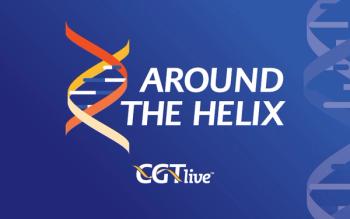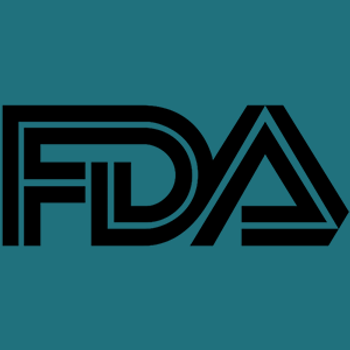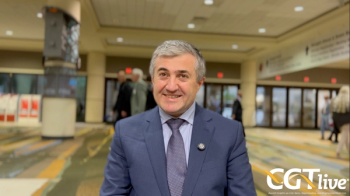
M. Peter Marinkovich, MD, on Integrating Gene Therapy into Clinical Practice for Dermatologists
The associate professor of dermatology at Stanford University discussed practical considerations for the introduction of gene therapies in dermatology.
As of 2025, there are currently 2 FDA-approved gene therapies available in the field of dermatology. These include beremagene geperpavec (B-VEC; marketed as Vyjuvek), a topical and redosable gene therapy from Krystal Biotech for the treatment of dystrophic epidermolysis bullosa (DEB) in patients 6 months or older, and Abeona Therapeutics' prademagene zamikeracel (pz-cel; marketed as Zevaskyn), an autologous gene-corrected epidermal sheet therapy for the treatment of patients with recessive DEB (RDEB).1,2 The products were approved in May 2023 and April 2025.
As these therapies begin to be integrated into standard clinical practice following their recent approvals, CGTLive® reached out to M. Peter Marinkovich, MD, an associate professor of dermatology at Stanford University, and an investigator on the pivotal GEM trials that evaluated B-VEC, to get his insight on practical considerations regarding these products. Marinkovich shared his thoughts necessary infrastructure, how to speak to patients about candidacy for gene therapy, and more.
CGTLive: What infrastructure (staffing, facilities, training, or equipment) does a practice need to safely and effectively deliver gene therapy?
M. Peter Marinkovich, MD: The infrastructure is minimal for Vyjuvek, as the patient can apply the therapy at home. The infrastructure for Zevaskyn on the other hand is more complicated. Many DEB patients are concerned about going into the hospital because they sometimes end up having much more blistering and erosions after coming out of the hospital than coming in. This is due to improper handling of patients skin during moving around either in the operating room or on the hospital ward. Also, while the patients are asleep, sometimes nurses and other medical personnel might try to apply sticky electrodes or tape to their skin, which will pull off their fragile skin when removed. Also, there is the need to have an anesthesiologist who understands how to intubate DEB patients, who have extremely fragile airways. For all these reasons, it is important that the facility administering Zevaskyn have surgeons, anesthesiologists, and nursing staff who have experience taking care of EB patients. This is critical to the success of this therapy.
What key factors do you consider when deciding whether a patient is a good candidate for gene therapy?
Open wounds and COL7A1 mutations are the requirements for gene therapy.
How do you speak to patients/families about the potential benefits/risks of gene therapy?
It’s important to use FDA labeling as a guide to talk to patients about efficacy and safety. From the labels it is clear that Vyjuvek and Zevaskyn are each corrective genetic therapies with similar benefits. Vjuvek’s end points for FDA approval were 100% wound healing at 6 months and Zevakyn’s endpoints were 50% wound healing at 6 months. Zevaskyn also showed pain relief as would be expected with reepitheliaalization of an open wound.
It’s important to note that both Vyjuvek and Zevaskyn are corrective therapies, which not only close the wounds, but close them durably because the collagen VII lasts in the skin a long time and makes the healed areas resistant to reblistering. This distinguishes them from noncorrective therapies such as Filsuvez which can speed wound healing, but offers no protection from reblistering. One advantage in efficacy of Zevaskyn is that as a graft, it can close the wounds faster compared to Vyjuvek, which requires time for wound healing to occur.
As far as safety, there are three 8 mm skin biopsies that are required for each Zevaskyn application, as well as the risk of general anesthesia as mentioned above. Also since the Zevaskyn retroviral vector is integrating in nature, there is the theoretical risk of insertional oncogenesis. The occurrence of cancer was shown using retroviruses in other diseases, such as leukemia following the treatment of severe combined immunodeficiency. While insertional oncogenesis has not been seen in Zevaskyn, the therapy requires long-term monitoring for its occurrence. Vyjuvek on the other hand requires no biopsies, has no risk of general anesthesia, and because it uses an episomal vector, there is no risk of cancer development.
What does long-term follow-up look like after gene therapy, both clinically and from a safety-monitoring standpoint?
In the original report on Zevaskyn, it was noted that efficacy gradually decreased over the first year after application and varied from wound to wound and patient to patient. However on subsequent follow up studies persistence of wound healing and pain improvement were noted over several years. Similar long-term studies with Vyjuvek demonstrate persistence wound healing effects, and it is clear that both Vyjuvek and Zevaskyn are durable and long lasting corrective therapy, but neither is permanent in nature.
How has gene therapy changed the way you collaborate with experts in other specialties?
We are now starting to see applications of our gene therapy work to other specialties. For example there is a trial of topical Vyjuvek gene therapy for the eyes starting later this year.
This transcript has been edited for clarity.
REFERENCES
1. Krystal Biotech Receives FDA Approval for the First-Ever Redosable Gene Therapy, VYJUVEK™ (beremagene geperpavec-svdt) for the Treatment of Dystrophic Epidermolysis Bullosa. News release. Krystal Biotech. May 19, 2023. Accessed May 19, 2023. https://ir.krystalbio.com/news-releases/news-release-details/krystal-biotech-receives-fda-approval-first-ever-redosable-gene
2. US FDA approves ZEVASKYN™ (prademagene zamikeracel), the first and only cell-based gene therapy for patients with recessive dystrophic epidermolysis bullosa (RDEB). News release. Abeona Therapeutics Inc. April 29, 2025. Accessed April 29, 2025. https://investors.abeonatherapeutics.com/press-releases/detail/303/u-s-fda-approves-zevaskyn-prademagene-zamikeracel
Newsletter
Stay at the forefront of cutting-edge science with CGT—your direct line to expert insights, breakthrough data, and real-time coverage of the latest advancements in cell and gene therapy.

















































